Image Quality
With an ultra-wide field of view, a supremely compact size, and a bargain price of just $299, I was expecting the RF 16mm to be a pretty poor lens optically. However, while there are certainly some significant compromises made to hit the size and price goals, I was pleasantly surprised by the quality of the images the lens produced. The biggest concession made in design was with native distortion, which then cascades to affect sharpness when corrected. As such, let’s begin our discussion with distortion.
Distortion
If you were wondering how Canon made a full-frame 16mm f/2.8 lens the size of a nifty-fifty, you need only look at the native distortion to get your answer. The lens produces images with a simply huge amount of barrel distortion, which is then corrected with software to provide the final image. The distortion of the native optics is high enough to almost give a slight fisheye look when uncorrected, which can be seen in the shot below:
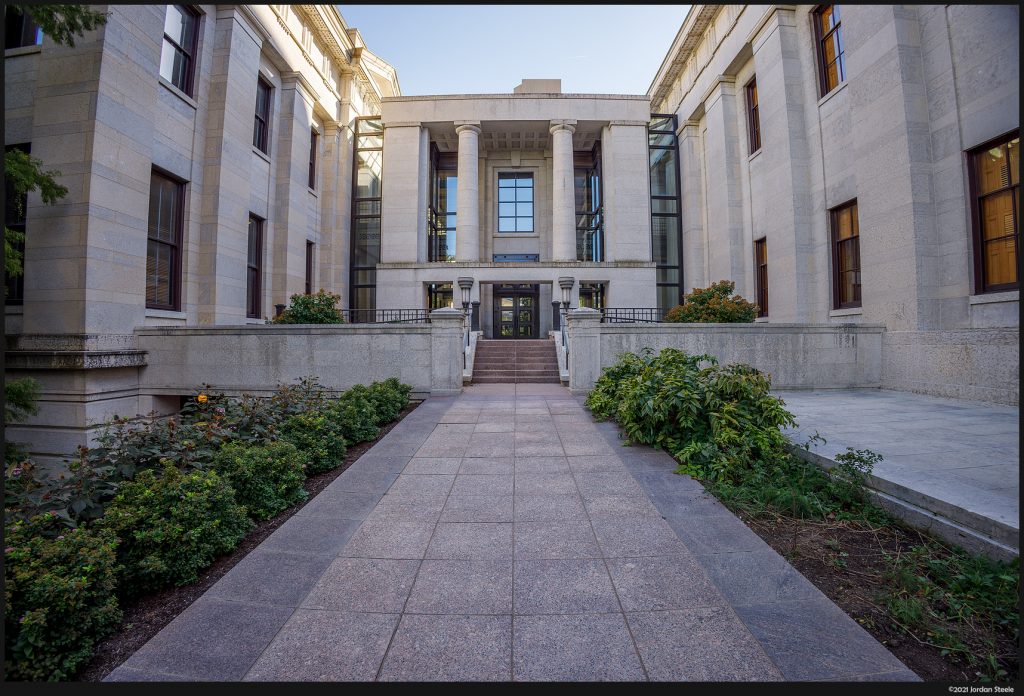
It’s worth noting that the field of view of the lens when uncorrected for distortion is significantly wider than what a typical 16mm rectilinear lens would produce, and when corrected, the final 16mm FOV is realized. This can work in your favor in some circumstances. Distortion matters far less for something like landscape photography, and in these cases, leaving the distortion uncorrected when processing the RAW files can allow you to use the effectively 14mm FOV of the uncorrected lens, while also showing increased sharpness in the corners (as I’ll discuss further below). However, for most uses, you will want to correct the distortion using a lens profile in your preferred RAW converter. Adobe Lightroom/Camera RAW and DxO PhotoLab already have profiles, while Capture One does not as of this writing. Below is the same image as above, but with the profile from DxO PhotoLab 5 applied.
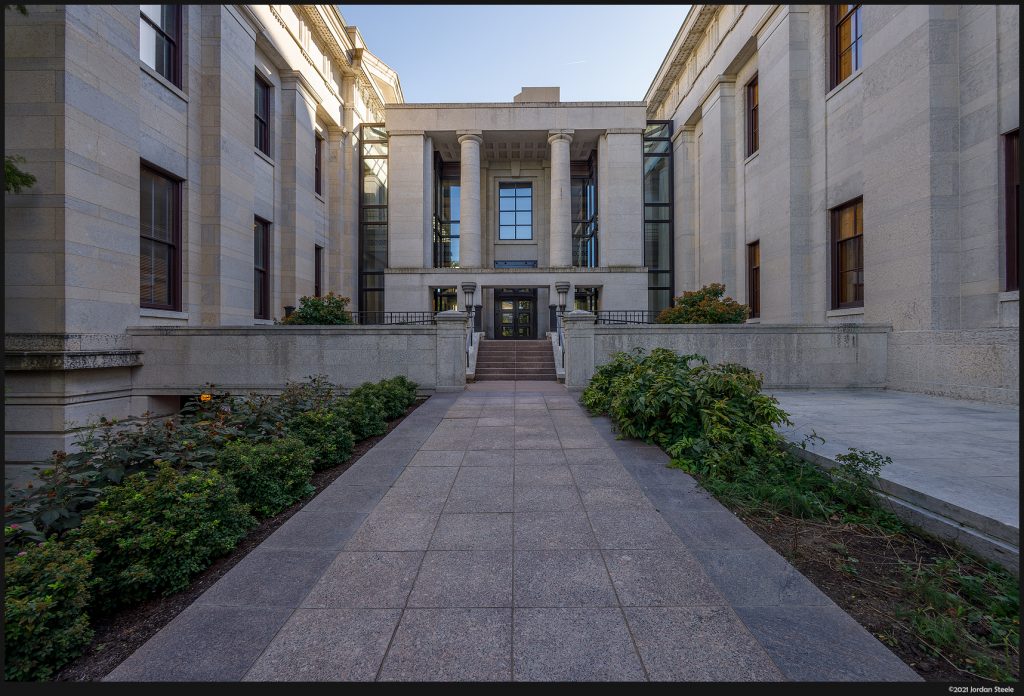
In evaluating the profiles from Adobe and DxO, it’s interesting to see Adobe’s profile only corrects for the image inside the ‘standard’ 3:2 crop after correction. If you expand the cropped area, the distortion of the leftover image is terrible and essentially unusable. DxO, however, fully corrects the area outside the crop too – and in fact by default creates images using a near 16:10 aspect ratio that takes advantage of the natively wider field of view. As such, when using DxO, you can almost use the lens as a 14-15mm lens, and even select which area of the crop to use if you want to maintain a 3:2 aspect ratio. This can be very useful when cropping after leveling the camera to minimize perspective distortion, such as in the shot below. Click to Enlarge
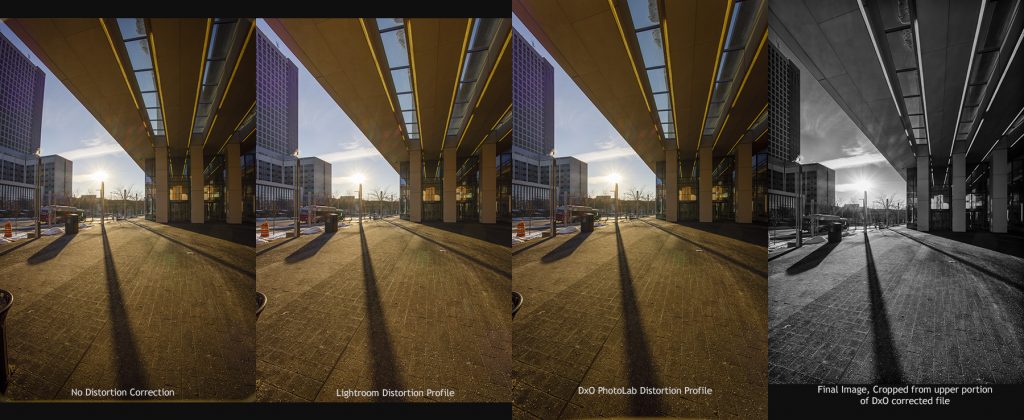
Sharpness
Despite the small size and low cost, the 16mm f/2.8 is predominantly quite a sharp lens, at least away from the image edges. Central sharpness is very good starting right at f/2.8, and that sharpness extends over about 75% of the frame. Wide open, edges and corners are soft. Stopping down a few stops brings the central region up to excellent sharpness, and improves edge and corner performance to good levels. That is, good levels if the image is not corrected for distortion. As mentioned above, you will need to correct for distortion when shooting anything with lots of straight lines, but landscape work often does not require it. The shot below is uncorrected for distortion, and then slightly cropped to the normal 16mm field of view, to avoid the dark corners that appear with the uncorrected image. If you click on the image to enlarge, then zoom in to the full resolution image, you can see that good sharpness is maintained even towards the edges and corners.
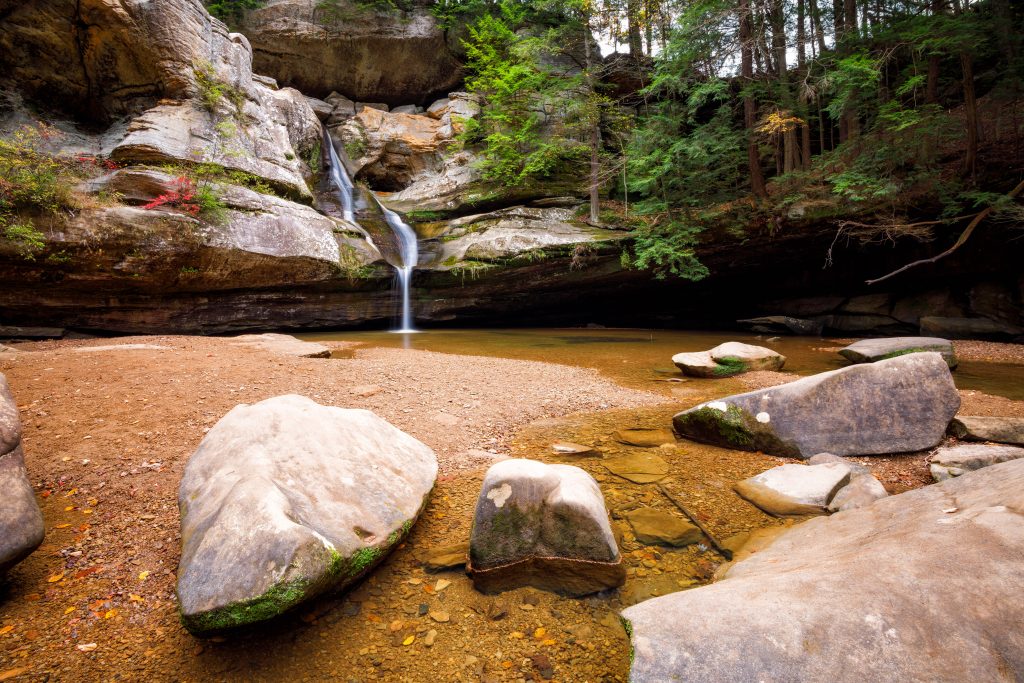
Once the distortion profile is applied, the rather extreme level of image stretching at the edges reduces edge and corner resolution substantially, resulting in some edge softness and smudged corners. When shooting architecture or other distortion-sensitive subjects, you will just have to deal with that small reduction in resolution at the edges. Here, too, I also find DxO Photolab’s profile to be better than Adobe’s, and better resolution is maintained at the image edges after correction. Below is an image, distortion corrected in DxO Photolab. Click here for a 100% crop of the lower right corner to see the type of corner and edge smearing that is visible after distortion correction.
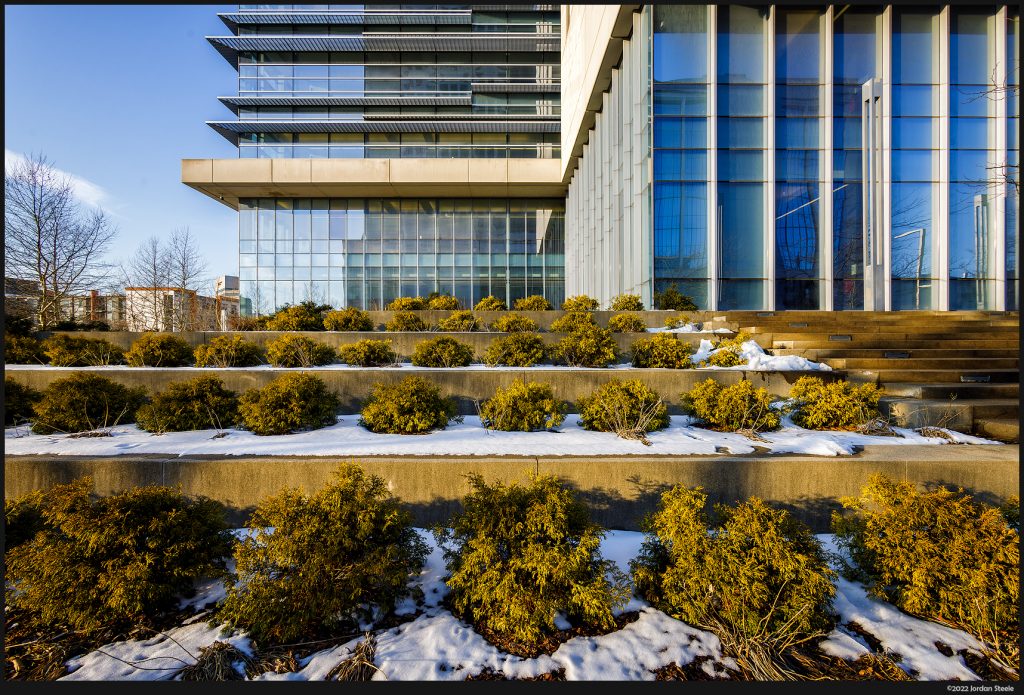
Despite these compromises, I find the lens very useful for most general purpose wide-angle photography. Serious architectural photographers will likely want to use a more well-corrected optic for critical work, but the lens works well considering its price point and other design considerations.
Bokeh
Being an ultra-wide angle lens, the RF 16mm f/2.8 won’t allow for huge amounts of blur, but with the f/2.8 maximum aperture and reasonably close minimum focus distance, the lens is definitely capable of providing some level of subject separation. The bokeh from the RF 16mm isn’t anything special, but it is nicer than I expected in such an inexpensive optic. The bokeh is not super creamy, and can have a slight bright ring at the edges of specular highlights, however, it is also not really objectionable either. Specular highlights take on a slight gumdrop shape near the edges, but the overall rendering is relatively neutral. In all, it’s a slightly above average performance here for such a lens.

Color, Contrast, and Chromatic Aberration
The RF 16mm f/2.8 does not lack when it comes to color and contrast. The lens produces images with rich color and excellent contrast, right from f/2.8. This is one area where inexpensive lenses often fail to impress, but Canon has done an excellent job in this department. Images really show a lot of punch and this can be far more important for most day to day shooting than fine detail in the corners.
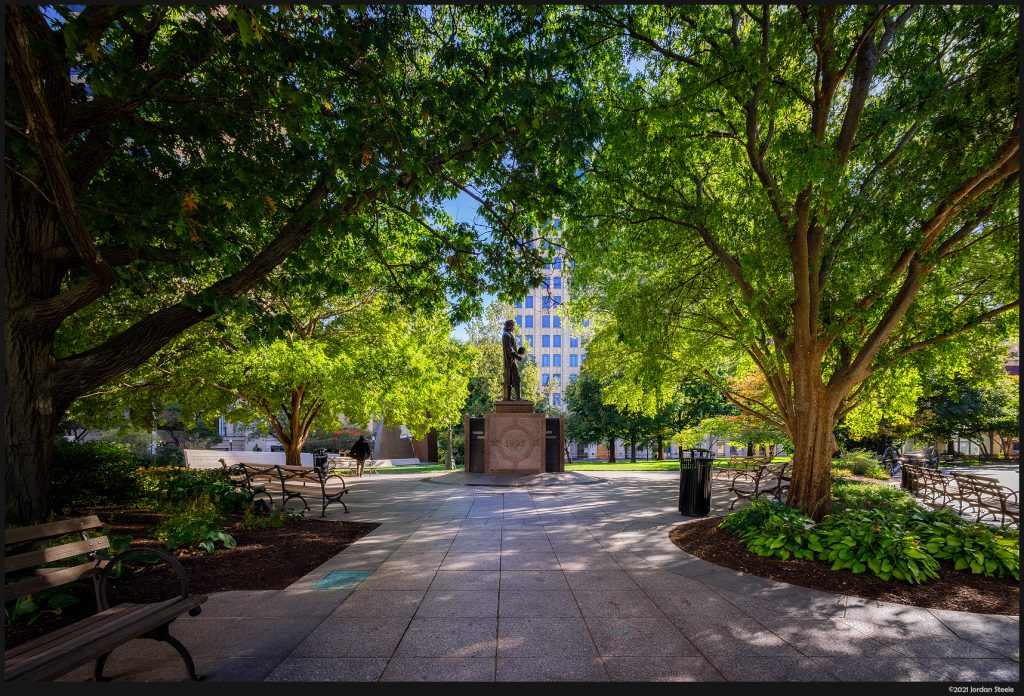
The inexpensive nature of the lens does show itself in chromatic aberration performance, however. The lens can show a fairly high amount of lateral chromatic aberration, which worsens at the edges, though this is mostly correctable in post-processing. It also will display purple fringing with high contrast areas, such as tree branches against a bright sky. These flaws are to be expected at this price point.
Flare and Vignetting
The RF 16mm f/2.8 STM shows a mixed performance against bright light. With the sun located close to the center of the frame, flare is relatively well controlled, with minimal loss of contrast and only a few ghosts visible. As the light source moves closer to the edge of the frame, flare becomes more prominent, with more significant ghosting. Sensor reflections can also be visible when shooting into the sun. I would recommend picking up the lens hood for this lens, as it can help with maintaining good contrast with the sun just out of frame.

The RF 16mm shows very prominent vignetting at f/2.8. The vignetting slightly intrudes on the image frame before distortion correction, resulting in completely dark extreme corners in the native RAW file, though these are cropped out after distortion correction. Vignetting eases upon stopping down, but never fully goes away.
As you can see, the RF 16mm f/2.8 STM is far from a perfect optic. It combines generally strong resolution with excellent color and contrast, but compromises in the optical design to hit the size and price desired show up in very strong barrel distortion, some chromatic aberration and average performance against flare and vignetting. Still, when you consider the minuscule size and the bargain basement price for an ultra-wide lens, the 16mm f/2.8 shows itself to be a very competent performer.






Leave a Reply